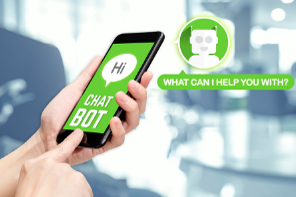Mobile Messaging Best Practices
Direct selling companies rely on being able to effectively communicate with their field. This is simple when a company is starting out with just a handful of early leaders; company founders can easily spend time developing and nurturing relationships with their first distributors.
Then the company grows to the point where the founders can no longer personally keep up with everyone in their field. When this happens, maintaining effective communications transitions from personal, one-on-one communication to mass communications.

The modes of mass communications have ranged from email to social media posts, but in recent years, companies are finding that the most effective communication channels are popular messaging mediums like SMS, Facebook Messenger, and WhatsApp.
Mobile messaging channels are effective because they are the same channels where distributors are communicating with their first level contacts–friends, family, and work colleagues. These messages take priority over all the other influx of messages that inundate people today. And people work to fiercely protect the sanctity of this primary messaging channel by guarding against unwanted, unsolicited, spam-type messages.
If direct selling companies look to utilize mobile messaging (and they should), they need to be adept at creating messaging that consistently feels valuable to the user. They should keep in mind that any incoming message that comes to your phone is going to be an interruption. Some of these interruptions are welcome (like a message from a loved one or a friend) while others will feel unwelcome (like an unsolicited marketing message).
The following is a best practices list that direct selling companies should consider when using mobile messaging.
Set user expectations and keep that promise
Whether you use an automation tool or have staff handle messages manually, it’s important to establish a set of expectations that users can consistently rely on.
For example, let people know how frequently to expect messages. Something like, “We will rarely message you more than once a week and it’ll always be something important enough that you’ll want to stay updated.”
You can also give people an idea of the types of messages you’ll send. Uncertainty is one of the main reasons people get nervous about messaging. If they’re worried that the messages will just be marketing or guilt-tripping to work harder, people are less likely to engage. On the other hand, if you can establish trust quickly and send truly helpful messages, people will get excited to see each new message.
Choose the right messaging channel for the audience
Depending on where someone is in the world and what demographic they belong to, their primary messaging channel preference might vary. A partial list of primary messaging channels includes SMS, WhatsApp, Messenger, Instagram, Viber, LINE, Kakao, WeChat, VK, and Telegram.
It’s important to gather feedback from your field when selecting mobile messaging channels. Where are they already messaging friends and family and trying to connect? Ideally, your messages should be in that same platform. You want them to feel like your messages are deeply integrated into their work and existing network. The farther they have to go to hear from you–even if it’s just into another app–the less they’ll pay attention to your messages.
Understand your users (where are they, what is their schedule)
Depending on your core user demographic, the types of messages and when you want to send them are very important. For example, maybe your core audience has full-time day jobs and focus on their direct sales business on nights and weekends. In that instance, getting your messages onto their screens at the right time can make a big difference in how they respond. If possible, consider letting your field set their own schedule to receive your messages to increase the chances of your message getting to them at the right time and place.
Write in a consistent voice
The compelling reason why messaging is so effective is that it’s conversational. In fact, in product terms, this is called conversational user interface because it isn’t like traditional software that requires logins, menus and search bars. Chatting with a trusted source is the most frictionless way to convey information.
So make sure that you message in a consistent voice over time. If you don’t, the experience could feel jolting. If you think about it, people work hard to portray themselves authentically when messaging their friends and it should be no different when receiving a message from a business. A consistent “look and feel” to your messages naturally develops trust and helps reinforce your brand identity with your field. The relationship they have with your messages should mirror the relationship you want them to have with your brand–whether that means being professional, straight-forward and efficient, or fun, surprising, and energetic, or anything else.
Offer interactivity
While you probably don’t have the time to message everyone individually, creating a messaging group can be a great way to help everyone feel a part of the community and get individual interaction without adding to your corporate team. You can create a group with several members, then simply start a discussion and let the group talk amongst themselves. This allows your field to naturally nurture each other and helps scale up your existing resources.
The best discussion questions are open-ended and require nuanced responses. For example, instead of asking, “Did the onboarding materials provided by corporate help?” you can ask, “What was the most helpful resource for you when you were first starting out? Why was that resource more helpful than the others?”

Another way to scale up your corporate resources to grow with your field is to build a chatbot. A good chatbot can provide step-by-step mentoring and answer a large number of the most common questions your field asks.
With a good chatbot in place, your existing team can spend less time answering the same question over and over and more time dealing with the most important work of developing your field.
Personalization
The more personalized a message feels, the more people are going to pay attention to it. Personalization can be a key factor in making mobile messaging feel helpful instead of annoying.
Thankfully, many messaging platforms offer ways to personalize messages at scale. Adding in a name to a message is now fairly standard and straightforward, but you can also find ways to personalize beyond the name, including messaging preferences like time of day and frequency, or allowing users to “follow” certain topics and not others so that the messages you are sending out are most likely going to the audience that wants and needs it the most. Additionally, full chatbot solutions can offer more complex personalization based on time with the company, rank, recent account activity, and so much more.
Get smart about what messaging technology to use
As your business grows, you’ll quickly find that manually keeping up with communicating with thousands of people isn’t scalable or doable. This is where marketing automation tools really come into place. Marketing automation tools for email are quite mature but the bad news is that email has quickly fallen out of favor for many users.
Marketing automation tools for mobile messaging are also now widely available although can require sophistication in putting them together correctly and can be costly. This is why businesses should have a solid ROI (return on investment) calculation in place as they implement them.
Key components to effectively using marketing automation include having workflows to keep your contact database clean and adhering to all consumer protection laws and regulations around text messaging.
Mobile messaging in direct selling
The competency you develop in effectively messaging to your field will also translate into interacting with your customers. It is estimated that 85% of all customer interactions will be handled via conversational interfaces this year and a 2017 Nielsen study showed that 53% of people are more likely to choose a business that they can contact via chat.
Direct selling companies that invest now in both the technology platforms and internal messaging competencies and best practices will find themselves a step ahead in this increasingly digital age.
Vince Han

Vince Han is the founder and CEO of MobileCoach and a frequent speaker at conferences such as Training Conference, DevLearn, FocusOn, Online Learning, ATDTK and others. He holds an MBA from the MIT Sloan School of Management. Vince is an industry thought-leader for learning and learning technology with an emphasis on artificial intelligence and chatbot technology. Vince has founded several successful technology companies and resides in Utah.
This article was originally published Sept. 28, 2020 in the World of Direct Selling.





